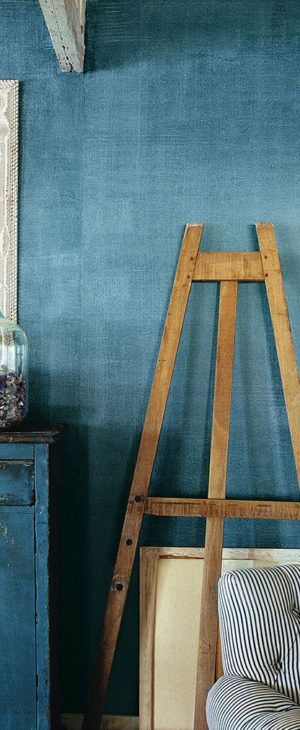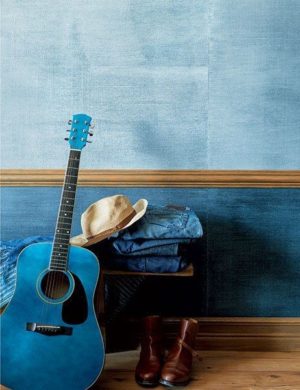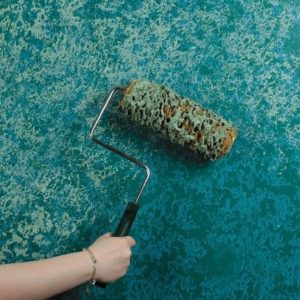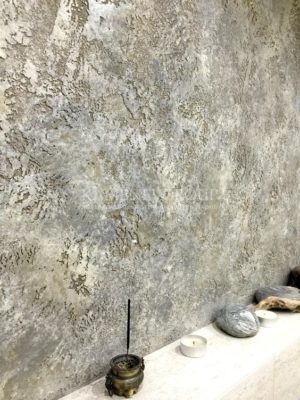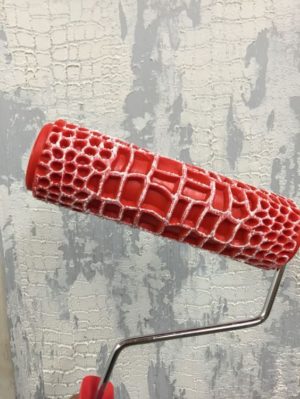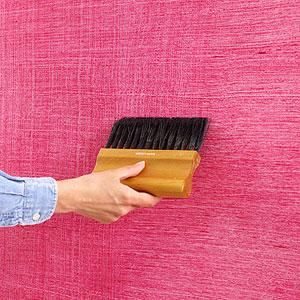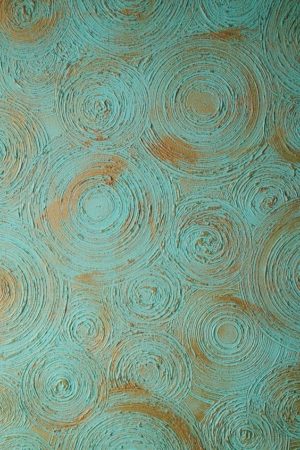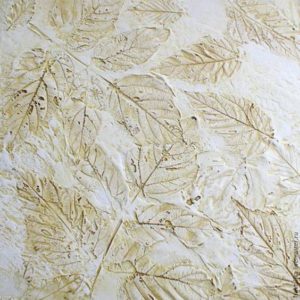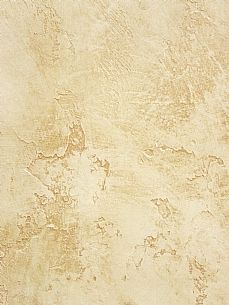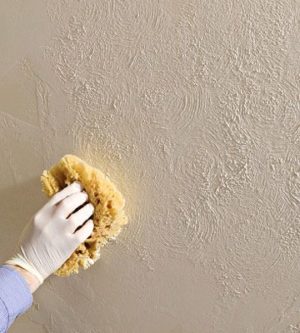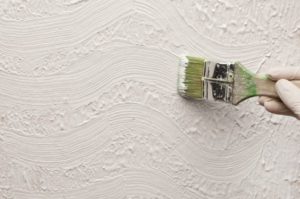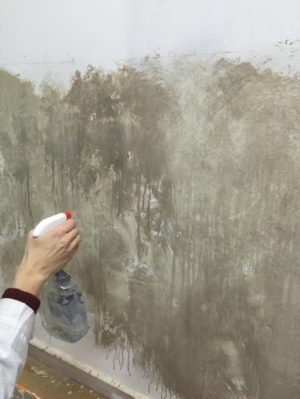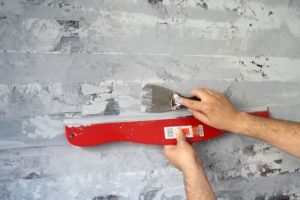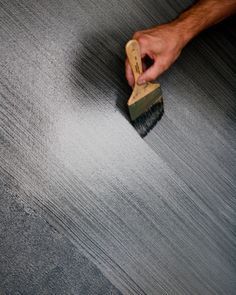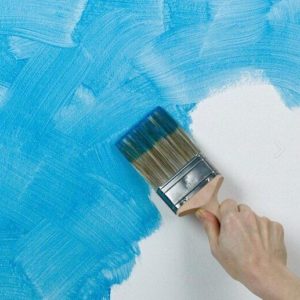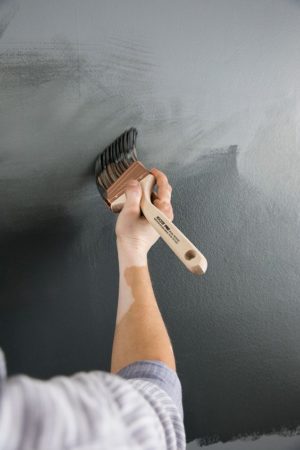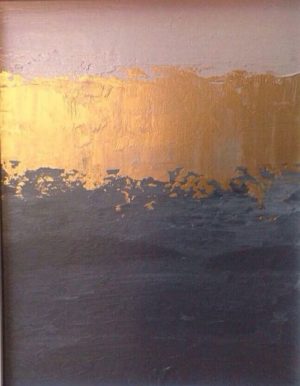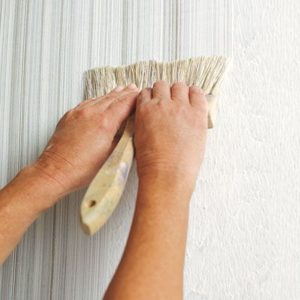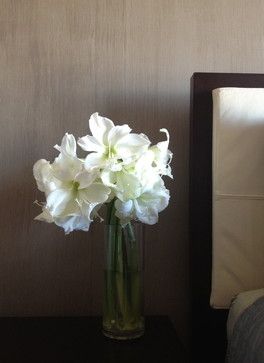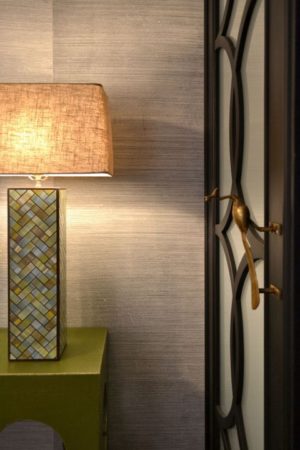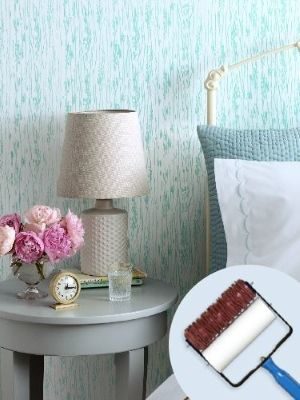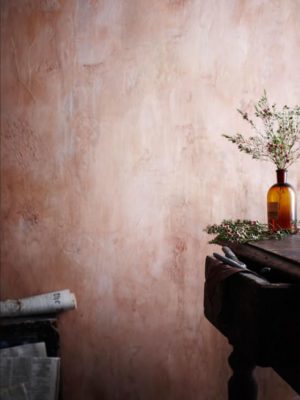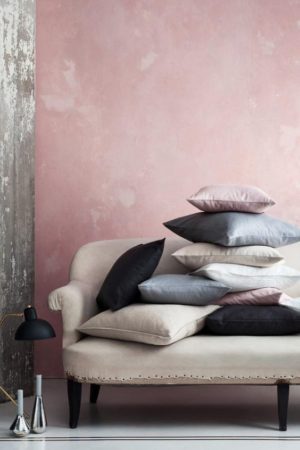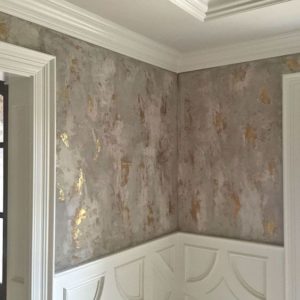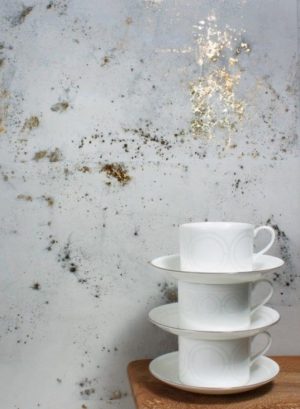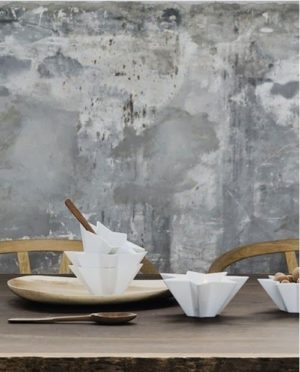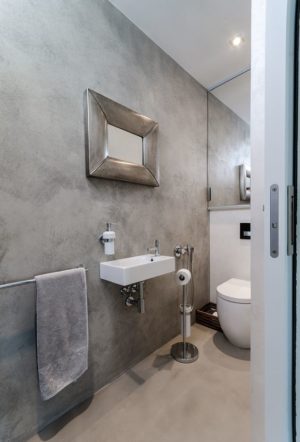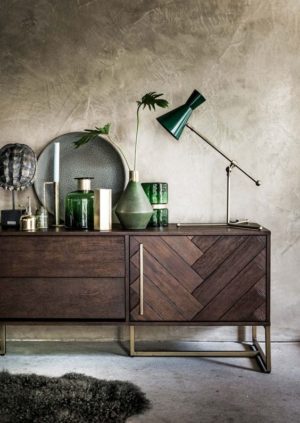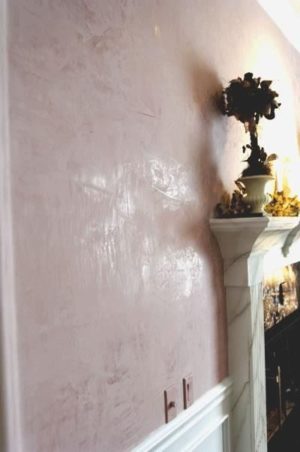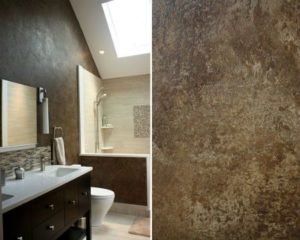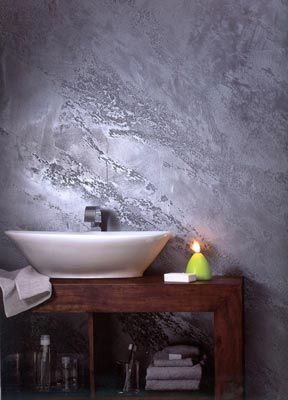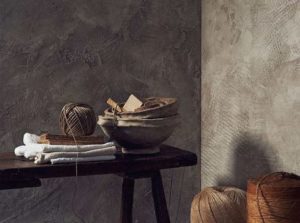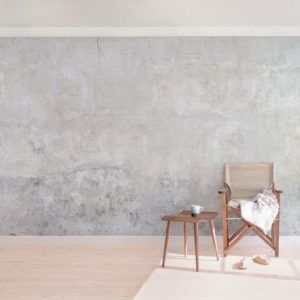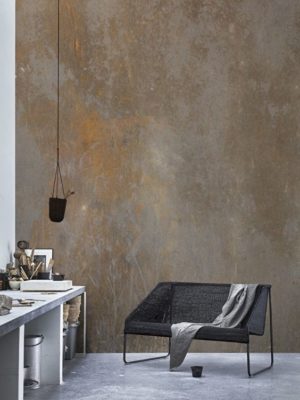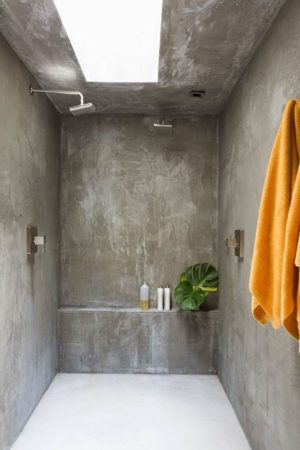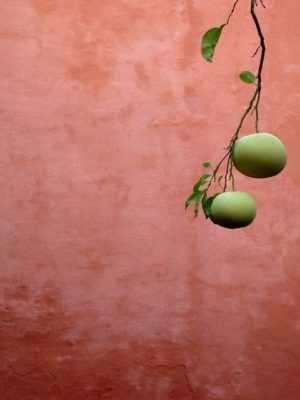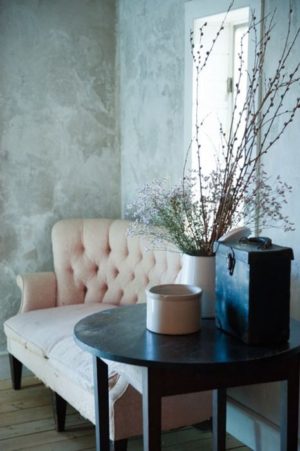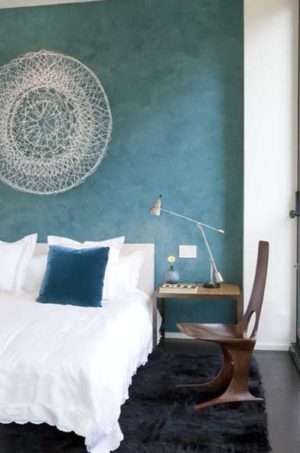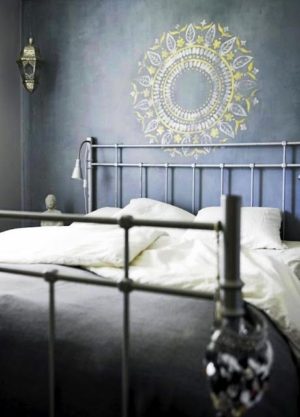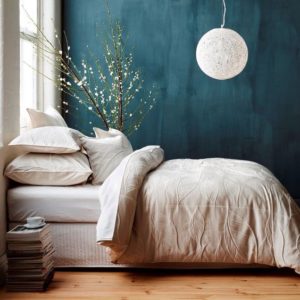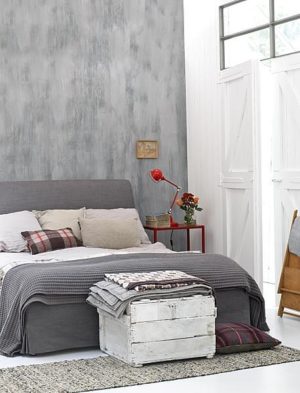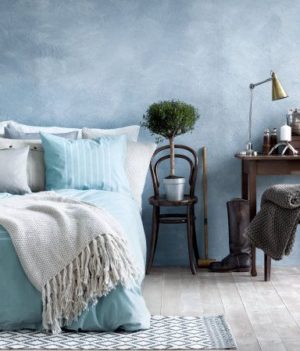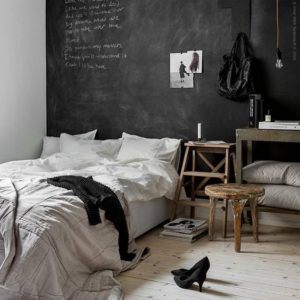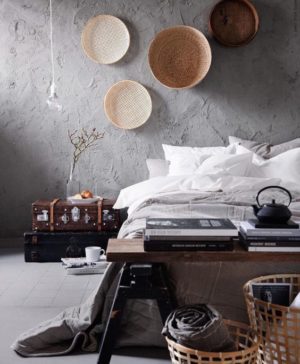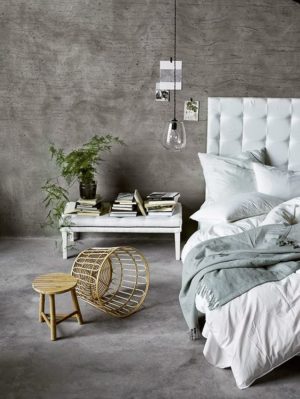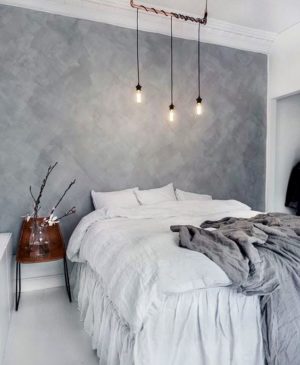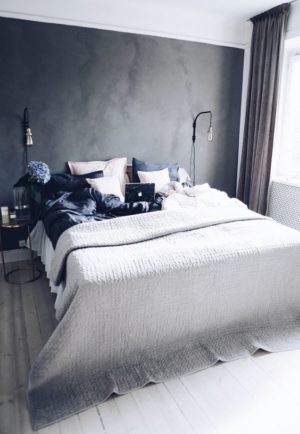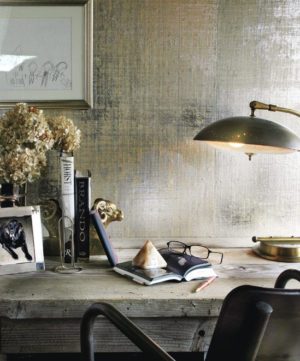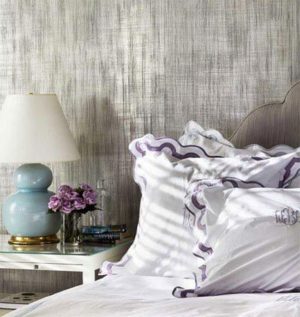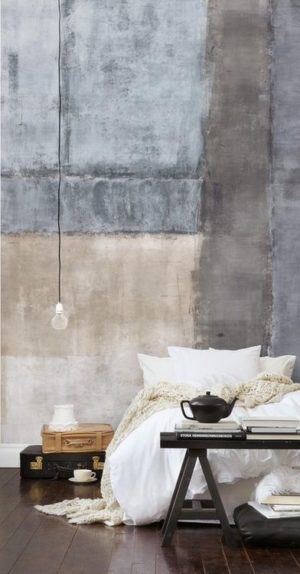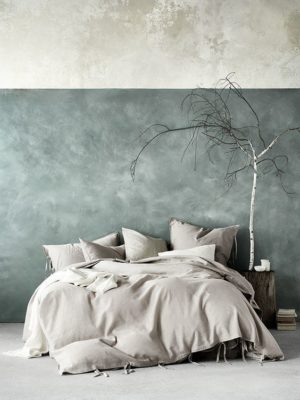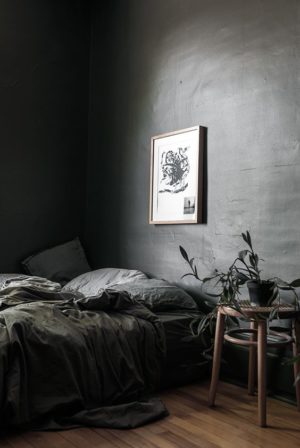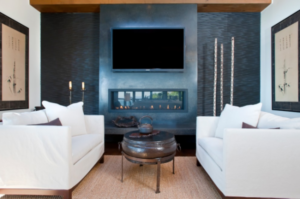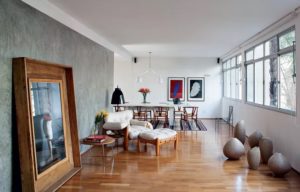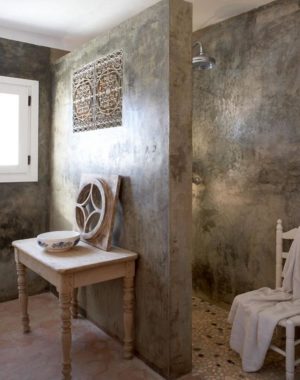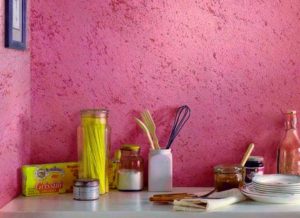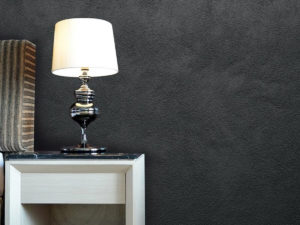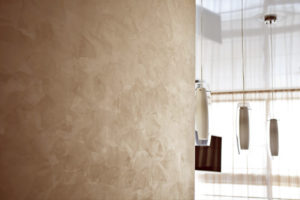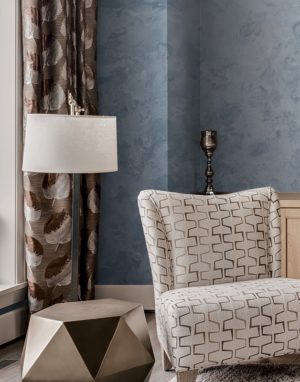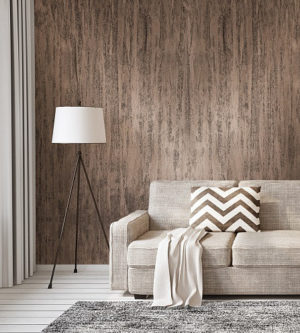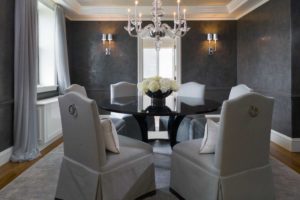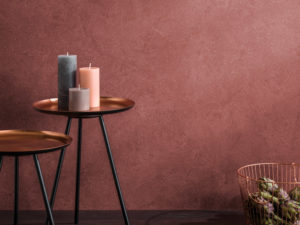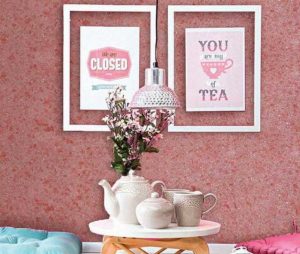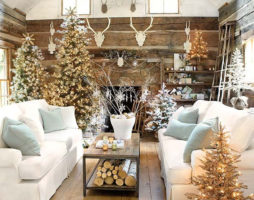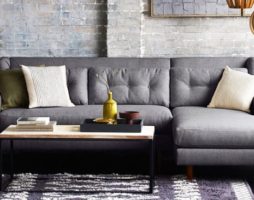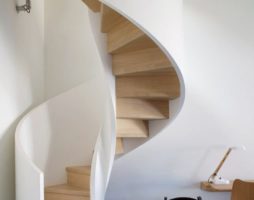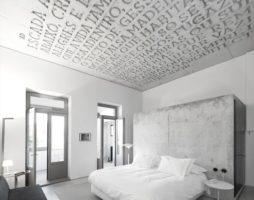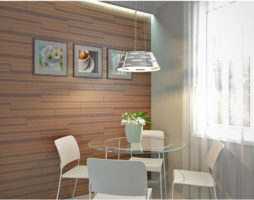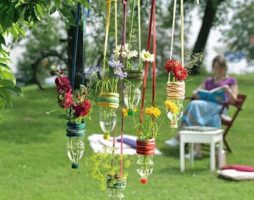To give the interior a unique look, it is important to choose paints and varnishes with unique features for decorating rooms. Textured wall paint is able to create spectacular patterns, ornate reliefs, virtuoso ornaments and the texture of natural materials.
- Textured wall paint: characteristic decor abilities
- Performance properties of textured wall paint
- Varieties of decorative and finishing material
- Decorative possibilities of textured paint
- Criterias of choice
- Texture paint colors
- Recommendations for using texture mixes for wall decor
- Technology of using interior paints
- Photo gallery - textured wall paint
- Video
Decorative blends with imitation velvet, gold, marble, crocodile skin or wood can easily turn any featureless building into a spectacular looking art object. Designers are actively using finishing compositions with original properties to create expressive backgrounds for a three-dimensional interior shell. The process of using textured wall paint is so simple that everyone can quickly master the art of painting.
back to index ↑Textured wall paint: characteristic decor abilities
It has a thick consistency with varying degrees of granularity. Depending on the visual effect, the coloring composition contains a variety of polymeric and natural components:
- Translucent cellulose fibers create an imitation of a mother-of-pearl coating of a wall with pearl chips;
- Granite and marble additives recreate the monumental appearance of the stone decoration of the room;
- Polymer fibers perfectly accurately convey the texture of various elite class fabrics - silk, velvet, brocade, jacquard and many others;
- Finely crushed ceramic chips form the appearance of a tile or mosaic coating, depending on the color, shape, size of the granules;
- Gas silicate components perfectly copy the look of the concrete coating;
- Flock granules with multi-colored coloring create the appearance of a wall decor with a multi-faceted textile carpet.
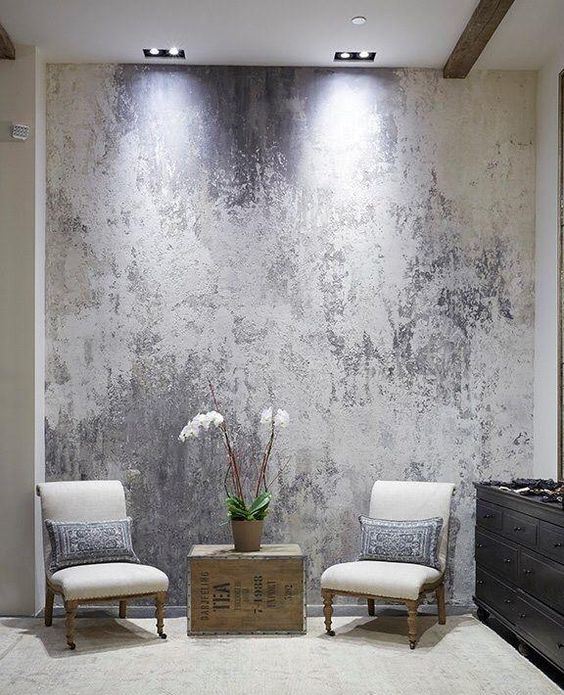
Marble additives recreate the look of a stone finish
Most varieties of textured paint are made with a transparent base. To give the desired color, you need to use the appropriate color scheme. This allows you to independently choose the tone to perform certain design tasks. You can create any desired background color or focal areas while decorating accent walls.

Transparent paint base allows you to choose your own tone
For several years, modern aesthetics with pronounced elements of eco-style have been at the peak of interior fashion. For example, the creation of a relief wall covering in the form of layered rocks, organic minerals and various types of natural bases with natural motifs.

Textured paint is ideal for eco-style
Performance properties of textured wall paint
In addition to the decorative ability, it has many advantageous differences from standard types:
- Excellent dimensional stability and ductility determines reliable exposure to shrinkage of the foundation in the first years of operation of housing in new buildings. Due to the resistance to external factors, the textured paint coating does not crack or peel off for many years of operation.
- High levels of light transmission indicate stable exposure when exposed to the sun. Under the influence of ultraviolet radiation, the wall covering ideally retains its original color and tone.

Textured paint is suitable for rooms with high humidity
- The excellent heat resistance of the finishing material allows it to be used in rooms with dynamic temperature changes and a high degree of humidity. Thanks to this property, the walls are not covered with mold, they are reliably protected from the spread of fungi that are harmful to health.
- The ability to repel dust and not absorb odors creates an impeccable microclimate in the room, which has a beneficial effect on the well-being and health of others.

Textured paint has excellent resistance to external factors
The high concentration of modified starch in the textured paint base causes the density of the mixture. Due to the dense base, it easily takes on any desired look under the influence of a roller with a figured nozzle. Thanks to the volumetric layer, before painting, it is not necessary to use a finishing putty, perfectly level the walls or eliminate small cracks and all kinds of roughness. A dense coating will easily hide all sorts of minor flaws on the surface.

Textured wall paint masks all wall defects
Varieties of decorative and finishing material
There are many ways to create relief patterns and ornaments on the walls. These include finishing with wallpaper for painting, decorative plaster, gypsum wall panels and many other design methods. The simplest solution to this interior problem is the use of textured paint. The abundance of its modifications is divided into types with different bases:
- Water dispersion is made from latex components with high rates of hypoallergenicity. This paint mixture endures the effects of chemical detergents, which greatly facilitates the care of textured wall cladding. In order not to damage the glossy finish, the shape of the texture, it is not recommended to use hard brushes, sponges, cleaning compounds with abrasive components.

Water-dispersion textured paint is hypoallergenic
- The mineral is made from lime and cement. Due to the use of natural water-based components, it is considered the most environmentally friendly finishing material for indoor use.

Mineral textured paint is considered the most environmentally friendly
- Acrylic with a polymer base is easily combined with all kinds of additives that create a relief coating. It has excellent vapor permeability, which causes intensive air circulation. It is advisable to use it for finishing stuffy and damp rooms - kitchens or bathrooms. It does not poison the air with volatile substances harmful to health, does not create a suffocating smell after painting.

Acrylic paint is well combined with all kinds of additives.
- Vinyl is considered a universal paint due to its excellent compatibility with a plane made of concrete, brick, timber or glass. It is necessary for facing monolithic walls or room partitions.

Vinyl textured paint is considered universal
Decorative possibilities of textured paint
The virtuoso decoration of the walls with a thick mixture produces the appearance of a cascade of a waterfall, a sand or pebble beach, a planet with craters, a grass cover or a plane entwined with a vine. Ideas borrowed from nature are easy to implement with the help of textured paint with a variety of effects and improvised materials:
- A wave-like coating is easy to shape with a dense layer of relief paint and exposure to a wide brush or textured roller due to strokes along a curved trajectory of motion.
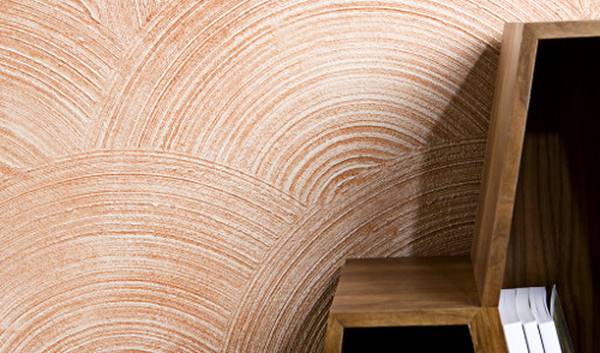
Wavy finish with textured paint
- The effect of tree bark can be achieved by treating a freshly painted wall with a damp, crumpled cloth with intense touches in a chaotic direction.
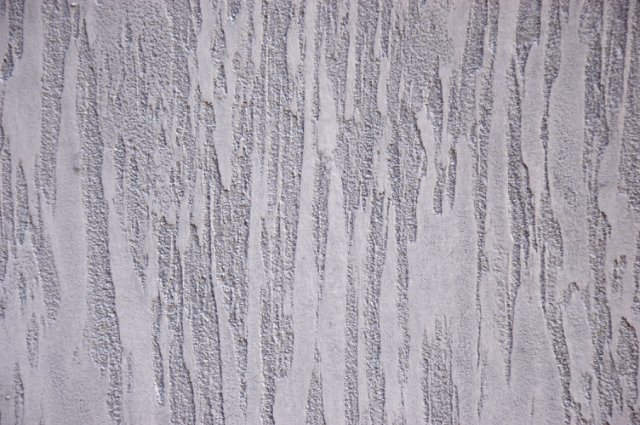
bark effect
- The appearance of cracked soil is easy to achieve with embossed effect paint. To create expressive cracks, you need to attach a previously crumpled and leveled newspaper to a freshly painted wall.
- An imitation of stone cladding with expressive traces of aging is simply done using textured paint with a wax effect. After drying, dynamic overflows of light and dark tones are formed on the glossy coating. The shiny film not only creates an expressive visual effect, but also firmly protects the wall covering from moisture.
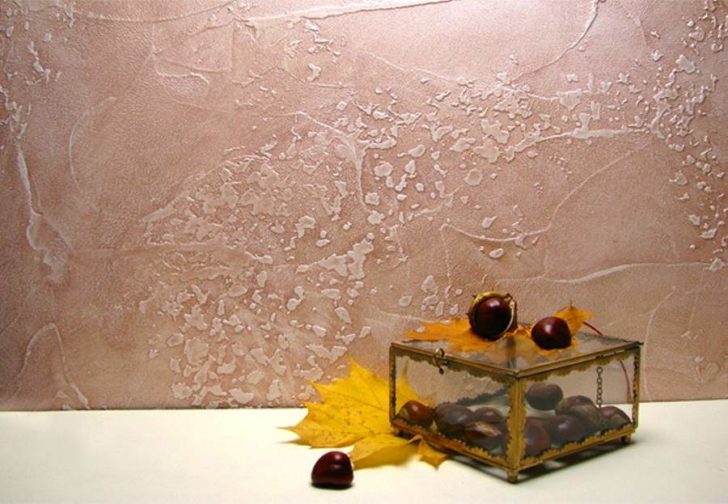
Textured stone imitation
- It is easy to recreate the look of the room with antique mirrors with the help of the “atacam” look of the decorative mixture. Due to the high content of quartz sand and iron chips, a metallized finish is obtained.
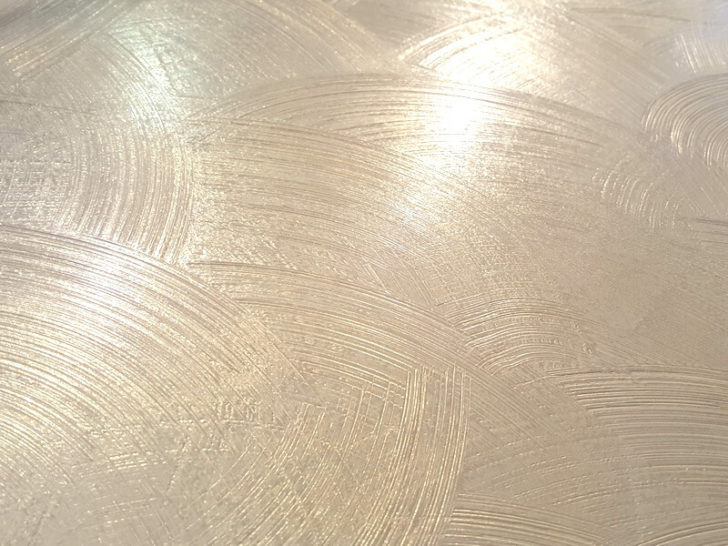
Metallic textured paint finish
No other finishing material is able to create such a relief coating.
back to index ↑Criterias of choice
Among the huge variety of modifications and varieties of interior wall paint without painting skills, it is extremely difficult to make a choice. Before starting the search, you need to know exactly the desired color and visual effect.
Before buying this decorative and finishing material, it is necessary to clarify many nuances:
- Scope of paint. Some types are designed exclusively for indoor or outdoor use. Depending on the influence of the environment, the composition includes materials that counteract the negative effects of moisture, sun, frost and other factors. There are universal varieties for painting any wall.
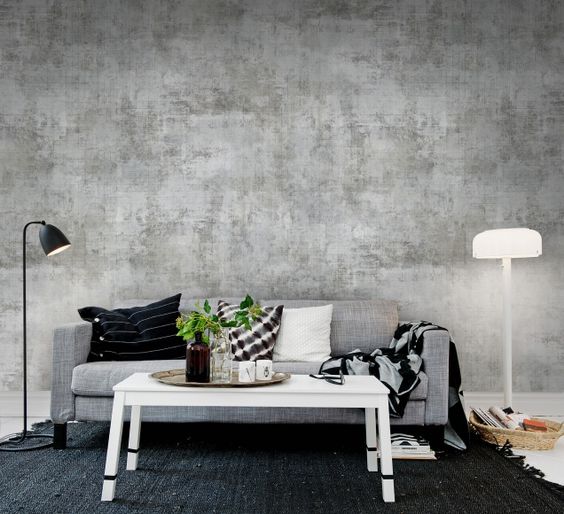
For interior decoration, choose paint for interior work
- operational properties. The appearance of the coating for a long time will be in its original state, given the conditions of use of the premises. For hallways, corridors, kitchens, nurseries or bathrooms, it is necessary to select options with the ability to regularly carry out wet cleaning. Textured mixtures must have a high level of moisture resistance.
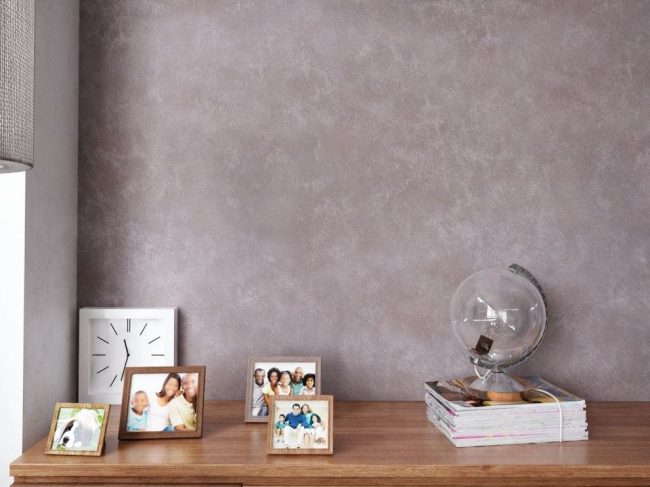
Textured wall paint has a high level of moisture resistance
- Term of use. During operation, it may be necessary to additionally apply paint in case of cracking or deformation of the coating. The longer the life of the paint mixture, the longer you can quickly eliminate any flaws on the wall.
In addition to good performance characteristics, textured paint must be of high quality. For interior decoration, it is necessary to choose not only a wear-resistant mixture, but also the most environmentally friendly. These include water-dispersion types with a water base.
back to index ↑Texture paint colors
In addition to the ability to create three-dimensional reliefs on the walls, decorative mixtures can modify their color. The multifaceted color palette allows you to create a picture of the interior with a plain background or with a predominance of different colors.
To obtain a two- or multi-color coating, it is necessary to apply several layers of paint.To obtain harmonious color schemes in the interior, mixtures of pastel colors are best suited: milky, pearl, sand, cream or snow-white. A proportionate and balanced combination of light colors will create a peaceful atmosphere in any recreation areas.
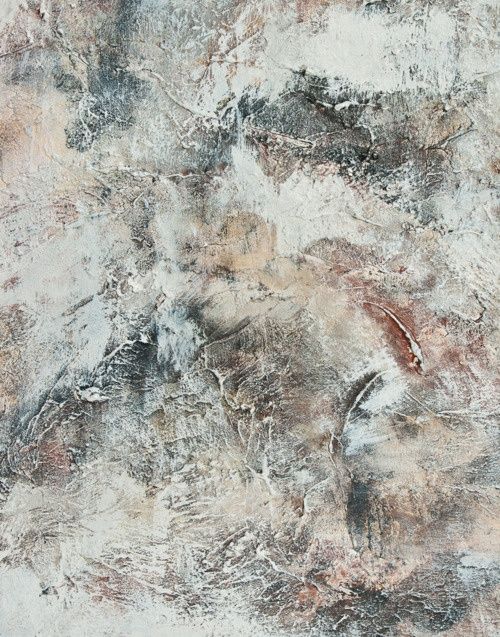
Combination of several paint colors for wall decor
To obtain an expressive color combination, you need to mix textured paints with contrasting tones: dark with light. On a brown background, floral patterns created by paint in yellow, ocher, white, heavenly colors look dynamic. Spectacular contrasts of warm and cold tones on wall coverings are characteristic of the aesthetics of pop art, fusion, Moroccan and oriental style.

Effective combination of contrasting colors
Interior paints and varnishes allow you to create masterpieces of design art within an apartment, country house or any other room. Practical textured wall paint is ideal for interior and exterior decoration. A photo selection of options for its use will help you choose the right type of paintwork material with the desired effect.
back to index ↑Recommendations for using texture mixes for wall decor
The selection of textured paint should be based not only on operational properties and decorative effect. Before working with interior paints and varnishes, you should familiarize yourself with the recommendations of designers.
- It is extremely important to study the composition, purpose, the possibility of tinting. Standard types of textured paints are ready for use after opening the package. Professional modifications must be independently painted with color, supplemented with insoluble components in the form of stone chips, fabric fibers or other additives to give the wall covering a relief look. For quick and thorough mixing, it is rational to use a drill with a specialized nozzle in the form of a mixer.

Use a drill with a nozzle to mix the paint
- To create the illusion of depth and volume of the ornamental decoration of the wall, it is necessary to perform a two- or three-layer painting. Thanks to the small and thin veins, translucent through the ornate or rectilinear patterns on the coating, the background coating looks expressive. The relief of the upper textured layer is easy to highlight due to the two-level painting with contrasting colors.
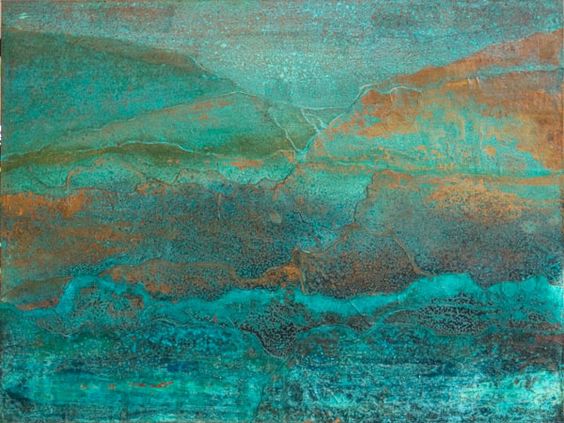
Coloring in several layers will create a volume effect
- To perfectly accurately convey the color of gold, silver, copper, bronze or any other precious alloy, you need to choose a textured paint with the appropriate tone and effect.
The richness of the metallic color and the man-made look of the decoration of the room are the characteristic features of the interior, decorated in the manner of antique and classical design styles. Multilayer wall coverings with 3D effects are signs of modern trends in interior fashion. To implement these design solutions, textured wall paint is ideal (the photo in the interior clearly demonstrates popular decor ideas in different stylistic designs).
back to index ↑Technology of using interior paints
Textured wall paint has endless potential. The thick mixture is easy to modify and apply flat. It is indispensable if you want to mask small cracks and create a virtuoso relief on the coating. The technology of its use is extremely simple and accessible to any connoisseur of non-trivial finishing methods.
Experienced painters advise:
- Pre-clean the coating from traces of old paint or wallpaper. Close large cracks with putty and prime the base several times.
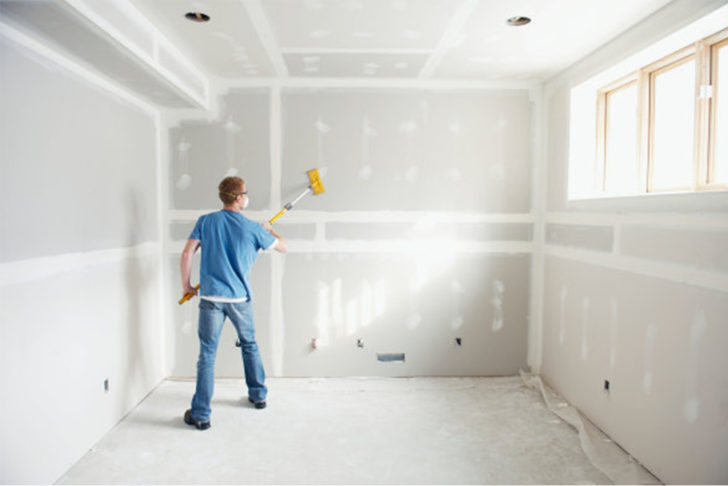
Prime base before painting
- Finish the wall with a specialized structural roller or a wide spatula.These painting tools ideally distribute textured paint around the entire perimeter of the plane.
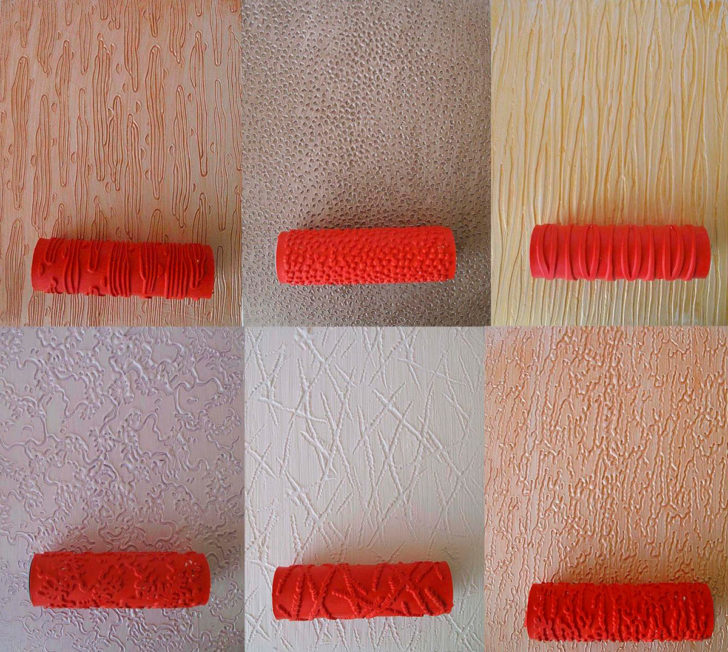
Textured paint roller
- With a two-color wall covering, the top layer is applied using a paint sprayer or spray in cans. These finishing methods greatly simplify and speed up the painting process.

The second layer can be applied with a paint sprayer
- If you want to create a unique texture, you need to add sawdust, coal or glass chips, crushed dry leaves, quartz sand, small pieces of ceramic mosaic or other hard granules. To give shine and fix the decorative elements after the paint has dried, the coating must be opened with acrylic varnish or specialized wax.

To create a unique texture, add stone chips
- To decorate the walls with original textures, it is worth using non-standard methods of finishing - the impact of a sponge, comb, broom, a piece of fabric, smooth or chaotic movements of the fingers.

Apply textured paint with a sponge
- It is necessary to work with paints and varnishes in rubber gloves and goggles.
Textured wall paint allows you to perform antique styling when using paints and varnishes with metallic and textile effects. This is true when arranging the interior in the traditions of palace styles: baroque, empire, art deco or rococo. Textured mixtures with imitation of natural coatings are modern elements of non-standard finishes. They are relevant to apply when decorating the interior in the style of eco, modern, country, avant-garde or rustic.
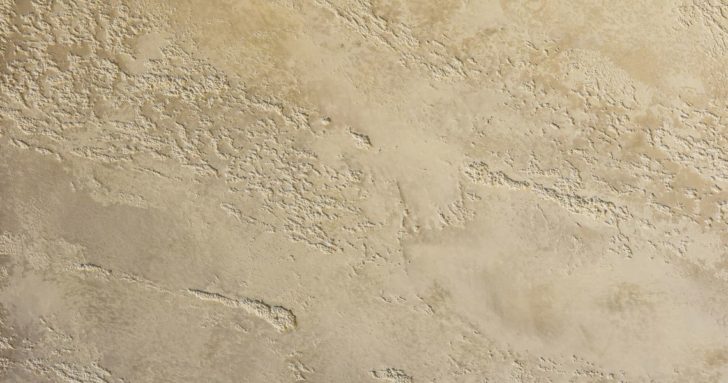
Textured wall paint with imitation of natural surfaces
Knowing the features of textured paint and the possibility of modifying its composition, you can endlessly carry out design experiments and independently perform filigree wall decor. Unique embossed coatings with man-made patterns and ornaments will emphasize the sophistication and exclusivity of the interior design, regardless of the chosen stylistic direction of design.
back to index ↑Photo gallery - textured wall paint
Video

